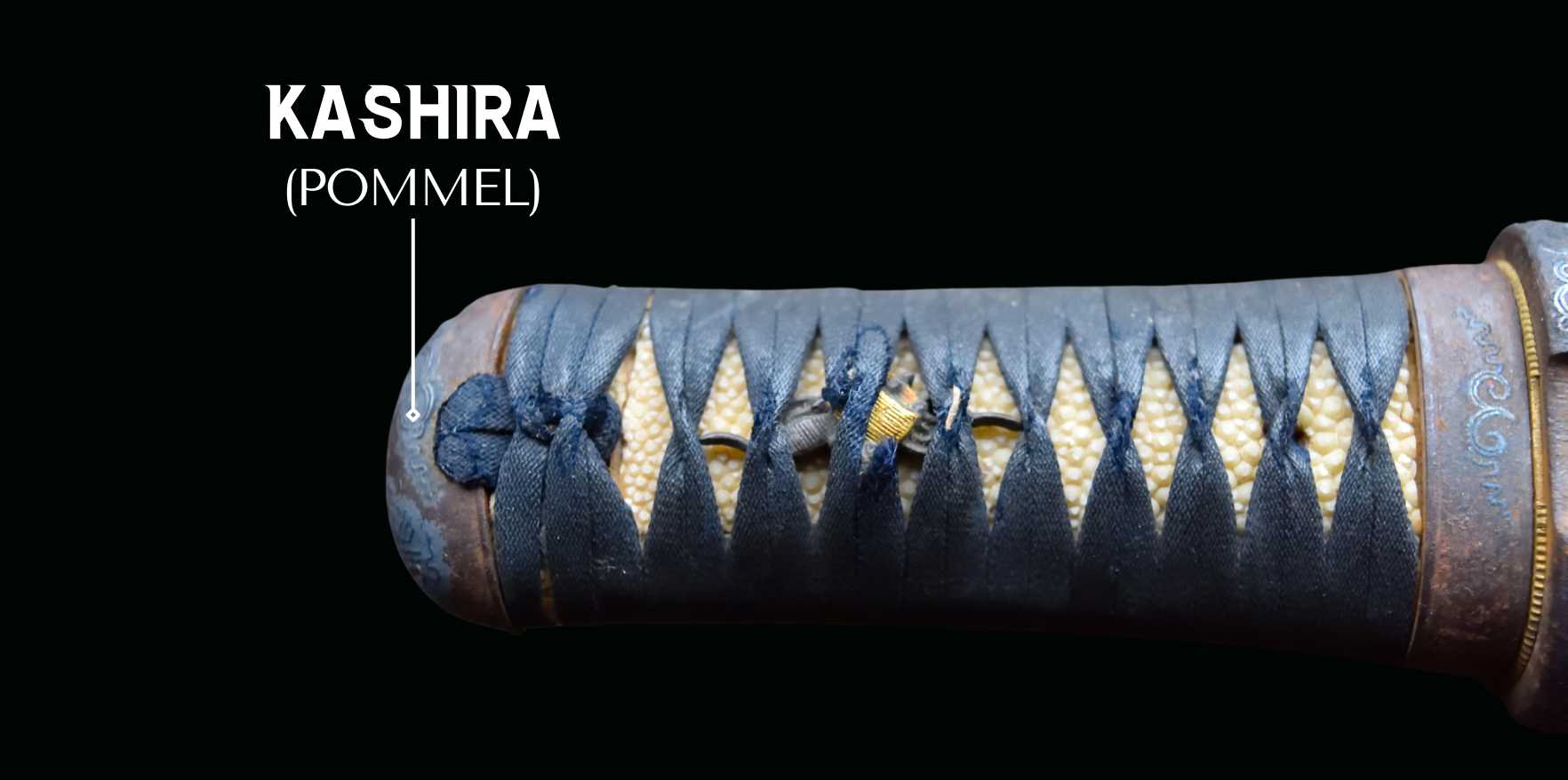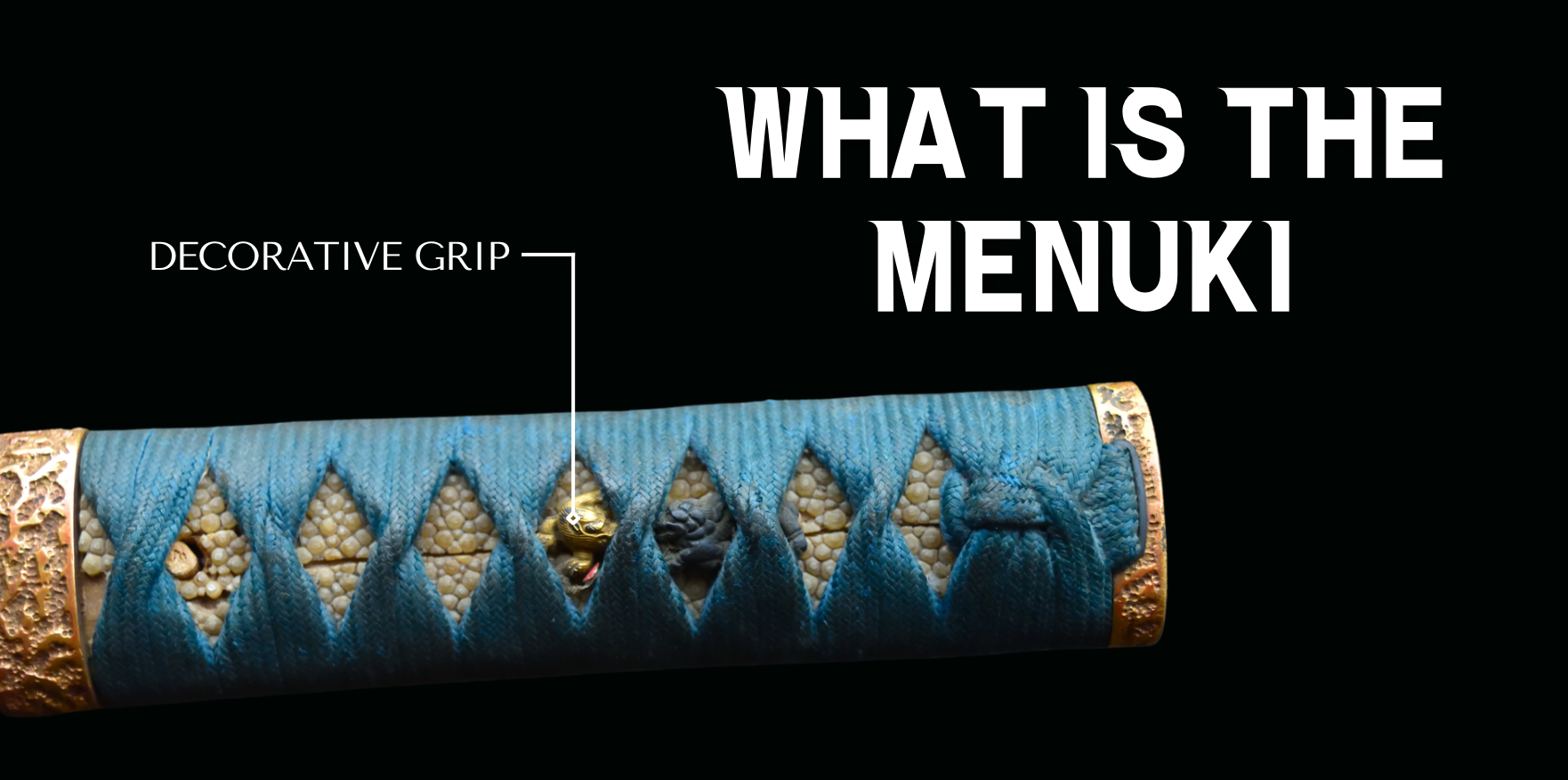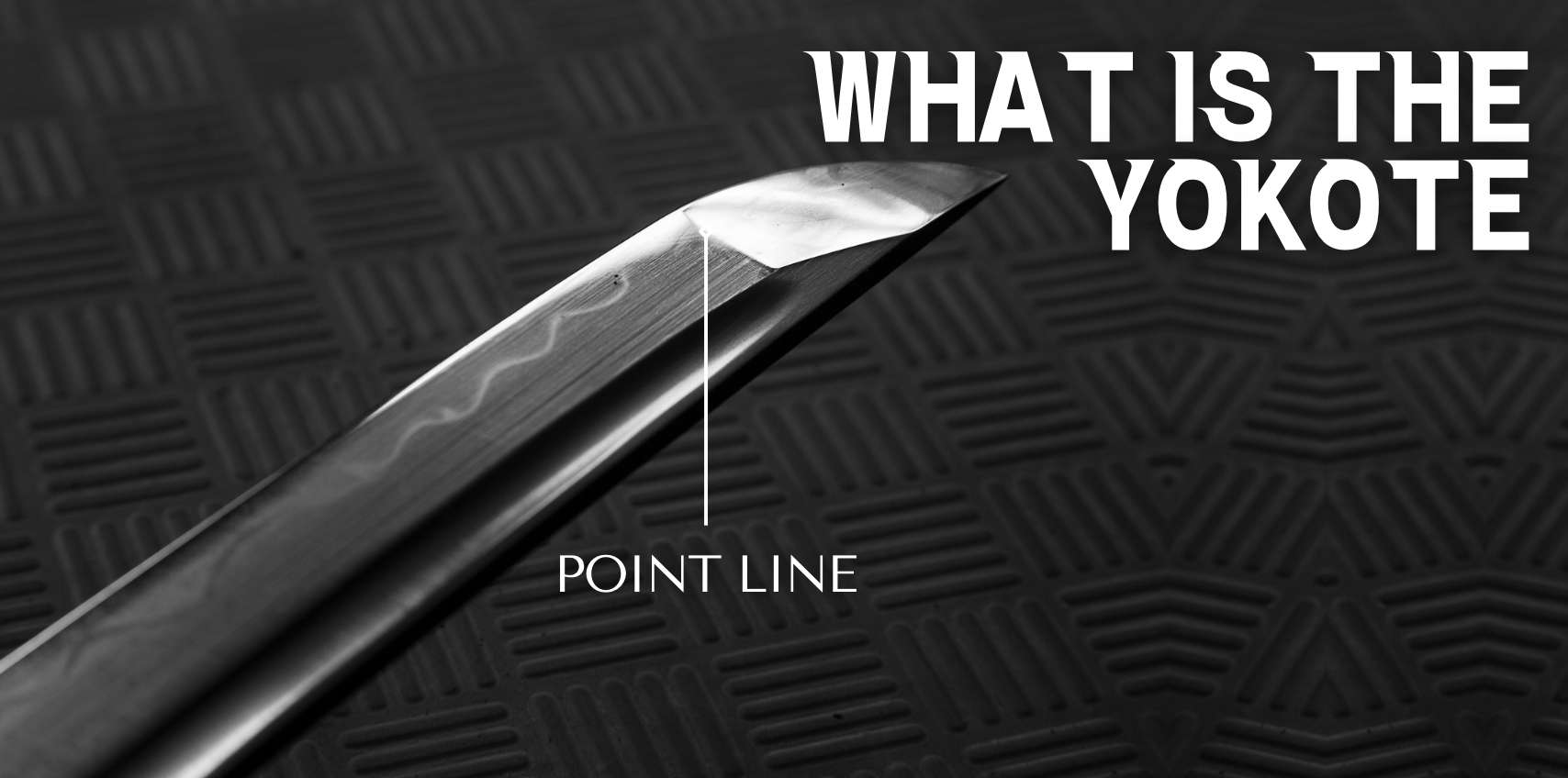Katana kashira

The kashira, or pommel, is found at the end of the katana's handle, opposite the blade. Its primary function is to secure the tsuka-ito, or handle wrapping, in place, ensuring the stability and structural strength of the sword. The kashira is often paired with the fuchi (the cap at the opening of the handle), and together, they form an integral part of the katana's tsuka (handle).
Kashira Materials
The materials used to create a Kashira are diverse. Conventionally, the substance used aligns with that of the tsuba (handguard), typically incorporating metals like iron, copper, silver, or gold. For a more decorative approach, some kashira are adorned with gilding or intricate inlays of precious metals and gemstones. The material and craftsmanship of the kashira, like the rest of the sword, often reflect the status and wealth of its owner.
The craftsmanship of the katana kashira is a testament to the swordsmith’s skill. The designs can be intricate or simple, often inspired by nature, historical events, mythology, or personal beliefs.
Kashira Styles and Motifs
The styles and motifs of kashira vary greatly, depending on the era, region, and individual swordsmith. Some kashira are minimalistic and feature subtle, simple designs. Others are incredibly detailed and intricate, showcasing impressive artistic skill. While the oval form is frequently seen, kashira can also adopt round, triangular, or rectangular shapes. They often bear designs inspired by the natural world, featuring flora and fauna, or delve into the realm of myths, with depictions of fantastical beings like dragons and phoenixes.
Now that we have dived in the katana's handle parts, let's take a look of the katana saya, a beautiful scabbard!
To sum up:
- Kashira is an integral part of a katana, securing the handle wrapping
- Regular care and maintenance are essential to keep the kashira in optimal condition.
- Kashira can have a round, triangular, or rectangular shape





